In 1830 he published a pamphlet, in the form of a letter to Sir Robert Peel, 16to explain that negroes were happier when forced to work; that, as their labour was essential to the welfare of the colonies, he considered the difficulties in the way of emancipation insurmountable; that it was not for him to seek to destroy a system that an over-ruling Providence had seen fit to permit in certain climates since the very formation of society; and finally with a Parthian bolt, he hinted that the public would do better to look to the condition of the lower classes at home than to the negroes in the colonies. The pamphlet made its mark, and was admitted by the abolitionists to be an attempt of unusual ingenuity to varnish the most heinous of national crimes. Three years later, when emancipation came, and the twenty million pounds of compensation were distributed, John Gladstone appears to have received, individually and apart from his partnerships, a little over seventy-five thousand pounds for 1609 slaves. 17
It is as well, though in anticipation of the order of time, to complete our sketch. In view of the approach of full abolition, John Gladstone induced Lord Glenelg, the whig secretary of state, to issue an order in council (1837) permitting the West Indian planters to ship coolies from India on terms drawn up by the planters themselves. Objections were made with no effect by the governor at Demerara, a humane and vigorous man, who had done much work as military engineer under Wellington, and who, after abolishing the flogging of female slaves in the Bahamas, now set such an iron yoke upon the planters and their agents in Demerara, that he said 'he could sleep satisfied that no person in the colony could be punished without his knowledge and sanction.' 18The importation of coolies raised old questions in new forms. The voyage from India was declared to reproduce the horrors of the middle passage of the vanished Guinea slavers; the condition of the coolie on the sugar plantations was drawn in a light only less lurid than the case of the African negro; and John Gladstone was again in hot water. Thomas Gladstone, his eldest son, defended him in parliament (Aug. 3, 1839), and commissioners sent to inquire into the condition of the various Gladstone plantations reported that the coolies on Vreedestein appeared contented and happy on the whole; no one had ever maltreated or beaten them except in one case; and those on Vreedenhoop appeared perfectly contented. The interpreter, who had abused them, had been fined, punished, and dismissed. Upon the motion of W. E. Gladstone, these reports were laid upon the table of the House in 1840. 19
We shall have not unimportant glimpses, as our story unfolds itself, of all these transactions. Meanwhile, it is interesting to note that the statesman whose great ensign was to be human freedom, was thus born in a family where the palliation of slavery must have made a daily topic. The union, moreover, of fervid evangelical religion with antagonism to abolition must in those days have been rare, and in spite of his devoted faith in his father the youthful Gladstone may well have had uneasy moments. If so, he perhaps consoled himself with the authority of Canning. Canning, in 1823, had formally laid down the neutral principles common to the statesmen of the day: that amelioration of the lot of the negro slave was the utmost limit of action, and that his freedom as a result of amelioration was the object of a pious hope, and no more. Canning described the negro as a being with the form of a man and the intellect of a child. 'To turn him loose in the manhood of his physical strength, in the maturity of his physical passions, but in the infancy of his uninstructed reason, would be to raise up a creature resembling the splendid fiction of a recent romance, 20the hero of which constructs a human form with all the corporal capabilities of a man, but being unable to impart to the work of his hands a perception of right and wrong, he finds too late that he has only created a more than mortal power of doing mischief.' 'I was bred,' said Mr. Gladstone when risen to meridian splendour, 'under the shadow of the great name of Canning; every influence connected with that name governed the politics of my childhood and of my youth; with Canning, I rejoiced in the removal of religious disabilities, and in the character which he gave to our policy abroad; with Canning, I rejoiced in the opening he made towards the establishment of free commercial interchanges between nations; with Canning, and under the shadow of the yet more venerable name of Burke, my youthful mind and imagination were impressed.' 21On slavery and even the slave trade, Burke too had argued against total abolition. 'I confess,' he said, 'I trust infinitely more (according to the sound principles of those who ever have at any time meliorated the state of mankind) to the effect and influence of religion than to all the rest of the regulations put together.' 22
1.The freedom was formally bestowed on him in 1863.
2.Sir William Fraser died in 1898.
3.Researches into the ancestry of the Gladstone family have been made by Sir William Fraser, Professor John Veitch, and Mrs. Oliver of Thornwood. Besides his special investigation of the genealogy of the family, Sir W. Fraser devoted some pages in the Douglas Book to the Gledstanes of Gledstanes. The surname of Gledstanes occurs at a very early period in the records of Scotland. Families of that name acquired considerable landed estates in the counties of Lanark, Peebles, Roxburgh, and Dumfries. The old castle of Gledstanes, now in ruins, was the principal mansion of the family. The first of the name who has been found on record is Herbert de Gledstanes, who swore fealty to Edward I. in 1296 for lands in the county of Lanark. The Gledstanes long held the office of bailie under the Earls of Douglas, and the connection between the two families seems to have lasted until the fall of the Douglas family. The Gledstanes still continued to figure for many generations on the border. About the middle of the eighteenth century two branches of the family—the Gledstanes of Cocklaw and of Craigs—failed in the direct male line. Mr. Gladstone was descended from a third branch, the Gledstanes of Arthurshiel in Lanarkshire. The first of this line who has been traced is William Gledstanes, who in the year 1551 was laird of Arthurshiel. His lineal descendants continued as owners of that property till William Gledstanes disposed of it and went to live in the town of Biggar about the year 1679. This William Gledstanes was Mr. Gladstone's great-great-grandfather. The connection between these three branches and Herbert de Gledstanes of 1296 has not been ascertained, but he was probably the common ancestor of them all.
4.John Gladstone built St. Thomas's Church, Seaforth, 1814-15; St. Andrew's, Liverpool, about 1816; the church at Leith; the Episcopal chapel at Fasque built and endowed about 1847.
5.Charles Simeon (1759-1836), who played as conspicuous a part in low church thought as Newman afterwards in high.
6.See below, pp. 106-7.
7.XII 58—'Removed from death by four or maybe seven fingers' breadth.'
8.The fragment is undated.
9.One or two further genealogical nugæ are among the papers. A correspondent wrote to Mr. Gladstone in 1887: Among the donors to the Craftsman's Hospital, Aberdeen, established in 1833, occurs the name of 'Georg Gladstaines, pewterer, 300 merks' (£16, 13s. 4d. sterling), 1698. George joined the Hammerman Craft in 1656, when he would have been about 25 years of age. His signature is still in existence appended to the burgess oath. Very few craftsmen could sign their names at that period—not one in twenty—so that George must have been fairly well educated. Mr. Gladstone replied that it was the first time that he had heard of the name so far north, and that the pewterer was probably one planted out. At Dundee (1890) he mentioned that others of his name and blood appeared on the burgess-roll as early as the fifteenth century. As for his maternal grandfather, the Inverness Courier (March 2, year not given) has the following:—'Provost Robertson of Dingwall was a descendant of the ancient family of the Robertsons of Inshes, of whose early settlement in the north the following particulars are known: The first was a member of the family of Struan, Perthshire, and was a merchant in Inverness in 1420. In the battle of Blair-na-leine , fought at the west end of Loch-Lochy in 1544, John Robertson, a descendant of the above, acted as standard-bearer to Lord Lovat. This battle was fought between the Frasers and Macdonalds of Clanranald, and derived its appellation from the circumstance of the combatants fighting only in their shirts. The contest was carried on with such bloody determination, foot to foot and claymore to claymore, that only four of the Frasers and ten of the Macdonalds returned to tell the tale. The former family was well nigh extirpated; tradition, however, states that sixteen widows of the Frasers who had been slain, shortly afterwards, as a providential succour, gave birth to sixteen sons! From the bloody onslaught at Loch-Lochy young Robertson returned home scaithless, and his brave and gallant conduct was the theme of praise with all. Some time thereafter he married the second daughter of Paterson of Wester and Easter Inshes, the eldest being married to Cuthbert of Macbeth's Castlehill, now known as the Crown lands, possessed by Mr. Fraser of Abertarff. On the death of Paterson, his father-in-law, Wester Inshes became the property of young Robertson, and Easter Inshes that of the Cuthberts, who, for the sake of distinction, changed the name to Castlehill. The Robertsons, in regular succession until the present time, possess the fine estate of Inshes; while that of Castlehill, which belonged to the powerful Cuthberts for so many generations, knows them no more. The family of Inshes, in all ages, stood high in respect throughout the highlands, and many of them had signalised themselves in upholding the rights of their country; and the worthy Provost Robertson of Dingwall had no less distinguished himself, who, with other important reforms, had cleared away the last burdensome relic of feudal times in that ancient burgh.'
Читать дальше
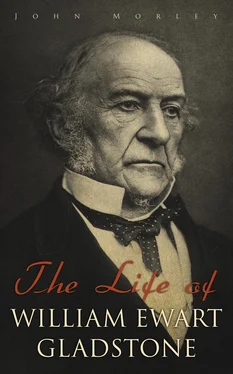

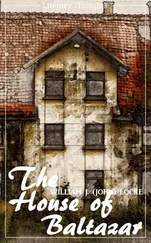
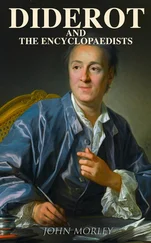

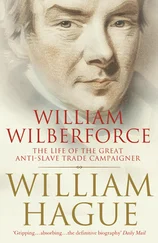
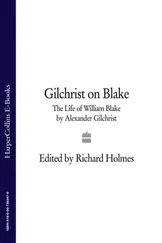
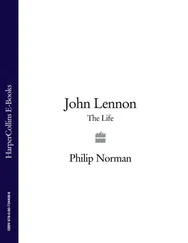
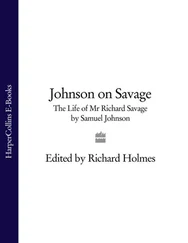
![William Frith - John Leech, His Life and Work. Vol. 1 [of 2]](/books/747171/william-frith-john-leech-his-life-and-work-vol-thumb.webp)


![William Frith - John Leech, His Life and Work, Vol. 2 [of 2]](/books/748201/william-frith-john-leech-his-life-and-work-vol-thumb.webp)